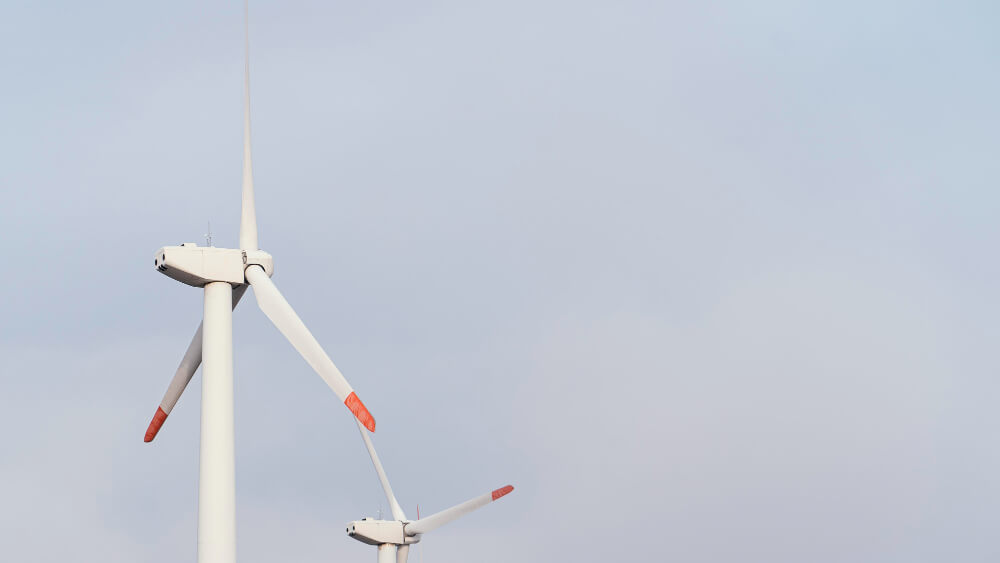India has been one of those countries that have witnessed tremendous growth in solar energy in the last couple of years. With the vision of becoming a global leader in renewable energy, India has ramped up its efforts to increase solar power generation and adoption across the nation. It has now come to be a significant element in the energy matrix of the country, starting from small-scale rooftop solar panels to large-scale solar farms. Along with the rapid increase in solar power systems, so does the demand for protective systems to secure these setups. Amongst the critical yet most unattended protective measures for the solar power system is lightning protection system.
Given India’s varied geography, its landscapes host quite recurrent occurrences of thunderstorms and strikes by lightning. In light of such threats to light damage in solar power establishments, this may eventually escalate to huge operational, financial, and safety risks. Thus, in India, the existence of a lightning protection system in India is more a preventive measure but, ultimately, an absolute need in ensuring that solar power systems are safeguarded against all possibilities of damage, especially considering reliability over the long term and also in terms of safety.
This blog is going to talk about why lightning protection systems in India are very important for solar power installations and how companies like Aashapuri Engineering Pvt Ltd are contributing to safety and reliability within the renewable energy sector.
The Expanding Solar Power Market in India
India has one of the world’s biggest solar energy programs. The Government of India has set very ambitious targets to build 500 GW of renewable capacity in the country by the end of 2030. Most of this, it will be solar power forming part of it. Till date, in 2023, more than 50 GWs of solar power are already installed in the country. In the coming years, these numbers are sure to rise exponentially. This explains how aggressively “clean energy” and “solar for all” have been promoted by the government, with the aim that the future of solar energy in the country remains bright. Such fast-growing installation has triggered an increased concern for the safety, maintenance, and durability of such systems. Even though the solar power systems have proved to be a reliable and eco-friendly source of energy, it is still exposed to all natural elements. One of the most hazardous threats posed by solar power systems is lightning strikes.
Lightning and Its Impact on Solar Power Systems
India is one of the countries that record the highest numbers of lightning strikes. Lightning strikes India 20 million times a year, resulting in massive destruction both to human life and property. In fact, lightning is among the leading causes of death due to weather-related events in this country. With more and more solar installations, the threat to solar systems increases of having lightning strike, that risks solar assets significantly. This means lightning strikes discharge static electricity within the atmosphere. It is the result of a high voltage electrical surge. The high-voltage electric surge may traverse the air, hitting the building and structure and electrical systems installed such as solar panels. A lightning strike can thus damage the solar panels and their wiring, inverters, and other electrical elements making up the solar power system. It may also create fires that can even consume the whole system.
Installed on rooftop or in the open field-most vulnerable to the elements- Solar panels are very susceptible to lightning. The reason is that the inappropriate and incomplete lightning protection system leaves a setup of the solar power system most susceptible to costly repair or loss of the system altogether.
The Need for Lightning Protection System in India
With lightning having taken huge forms and shapes in the nation, a lightning protection system is required in India about its solar power systems as the following reasons necessitate:
1. Thunderstorms and Lightning Frequently Strike India
The states that experience thunderstorms and lightning strikes frequently are Uttar Pradesh, Bihar, West Bengal, Maharashtra, and parts of Rajasthan, along with the coastal regions. As more and more solar installations rise in these areas, there is an acute need for effective lightning protection systems to safeguard the infrastructure of solar power systems being developed. Without the protection system, the solar installation in the regions is prone to direct lightning strikes that cause major damage. The increasing cases of lightning strikes in the regions make it an important era to install reliable lightning protection systems to prevent such damage systems.
2. Vulnerability of Solar Power Systems to Lightning
A solar power system has several vulnerable electrical components including solar panels, inverters, and storage systems through a battery that can be susceptible to being struck by lightning. Panels are mostly installed at some elevated points on rooftops or areas without obstructions. So, the installation of panels in such high locations does expose them to possible strikes since the materials making up a solar panel contain conductors, and any direct strike produces an enormous flow of electric current into the system. The parts most susceptible to a lightning strike are the inverters as this causes the power surges that often damage these parts making the whole solar system to not work properly. Besides, the battery storage systems store energy produced by the sun in the solar panels, and it is usually affected by power surges due to lightning strikes.
3. Cost of repair and replacement
The cost of repairing or replacing individual elements of a solar power system after a lightning strike might be very high because components such as solar panels and inverters can run pretty high, and similarly to storage batteries. These items are costly, but to replace any of these for lightning damage would hit directly at the financial soundness of solar energy projects. The repair and replacement cost may be a huge deterrent for a solar power installation, and users may not be able to recover the initial investment based on ROI. The cost of repair also includes the time and efforts needed for the system to become operational again. This might also be very costly as a result of loss in terms of time, which turns out to be losses to commercial and industrial installations relying on the solar energy so much in running their respective businesses.
4. Safety Issues
Besides damage from being struck by lightning, there is also a danger it poses to humans and other property. Most of these large-scale solar farms have been installed in rural open areas where people are employed or residing. If a lightning strikes an exposed solar power system, electric shock, fires, and all sorts of accidents can and may occur that may and will cause damage to personnel and property. This risk is reduced with a lightning protection system in place, such as protection for personnel who may work on or around solar installations. This does not only ensure the safety of equipment but also of human life and property.
5. Long System Life
Like any other electrical infrastructure, a solar power system should receive regular maintenance and protection if it is to perform long enough. A lightning protection system ensures that damage resulting from lightning strikes cannot damage a solar power system thereby prolonging its period in operation. Solar power systems are designed to run from 25 to 30 years or more but proper protection can reduce such short periods caused by the results of lightning strikes. This is an investment into a lightning protection system which can help preserve the solar installation’s efficiency and lifespan in order to gain maximum returns on investment on the system.
6. Compliance of Safety Regulations
In India, lightning protection systems are included in the specific safety standards and guidelines issued by the Bureau of Indian Standards for ensuring the safety and reliability of electrical installations, even including the installation of solar power systems. Therefore, these installers and owners must adhere to those standards to ensure that the system is protected properly. Aashapuri Engineering Pvt Ltd is a leading lightning protection solution provider. All the products and services offered by Aashapuri Engineering Pvt Ltd are BIS safety standards compliant. Therefore, the solar power owners can be rest assured that their installations are safety and protection compliant if they partner with Aashapuri Engineering Pvt Ltd.
Key Components of a Lightning Protection System for Solar Power
A solar power system lightning protection consists of parts that are oriented to guide and distribute the energy from a lightning strike in a safe way. They are; Air Terminals (Lightning Rods): These are metal rods or conductors placed at points that are the highest around the installation. The rod attracts the lightning strike and directs it toward the grounding system.
Conductors: These are the wires or cables that connect the air terminals to the grounding system. The conductors take away the electrical energy from the lightning away from the solar panels and other components.
Grounding System: In a grounding system, electrodes buried into the ground are made to dissipate the lightning energy into the earth without causing harm. Proper grounding ensures that the energy does not flow back into the system but instead safely dissipates into the earth.
Surge Protection Devices: Surge protection devices protect the sensitive electrical components, such as an inverter and a battery, from a lightning current by absorbing and redirecting electrical energy from the lightning.
Combining such componentry in a lightning protection system ensures that the lifetime of a solar power installation and its safety are also protected from lightning damage.
Aashapuri Engineering Pvt Ltd: Reliable Source of Lightning Protection Systems
Aashapuri Engineering Pvt Ltd established itself as a renowned lightening protection solutions in the Indian market. With all these years of electrical safety and lightning protection experiences Aashapuri engineering offers itself as one among those trusted names, and such solutions are well-equipped according to the individualistic necessities of solar installation by devising lightning protection schemes meant to protect the gear equipment, people, as well as their possessions. Lightning protection from Aashapuri Engineering Pvt Ltd that offers superior quality of the products, designs, and provides installation facilities. This Company takes advanced technologies for updating. Provides safety to maintain an extremely high safety standard with these solar power systems of all over India. A gigantic solar farm or installing upon roof top may be- In all conditions, every individual project of the companies with lightning risks, will ensure, Aashapuri Engineering Pvt Ltd.
Conclusion:
As India moves forward to leadership in the solar energy regime, robust protection systems have become unavoidable for the protection of the solar power systems against lightning damage effects. Any Indian solar installation requires a lightning protection system as it is an integral safeguarding element that gives protection from damage to the system as well as security to personnel and property. It increases the operating time of solar power systems while a protection system in the form of a lightning protection system in India also helps. This will ensure the installations done by the owners of the solar power are well-protected and meet the requirements for local safety standards in that area. As the nation is embracing renewable energy, installing lightning protection is no longer something added; it has now become a must to safeguard the future of solar power in the country.

